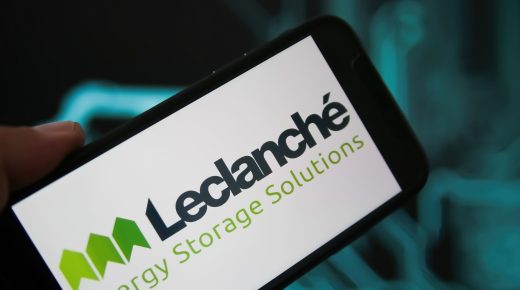Artificial Intelligence isn’t just another tech wave. It’s the new industrial revolution, a full-blown economic war disguised as a software update. Whoever controls AI controls productivity, narrative, and, eventually, sovereignty.
For Europe, 2025 isn’t just another year. It’s the year we decide whether to be players or passengers in the defining race of the century.
The setup: A Continent caught between giants
When it comes to AI, Europe’s starting grid looks more like the midfield than pole position. The U.S. and China are running billion-dollar engines, private capital on one side, State muscle on the other. Meanwhile, Europe’s trying to win the race with a clipboard full of compliance rules and a car that still runs on consensus.
Numbers don’t lie. American cloud providers control over 70% of Europe’s cloud market while European ones represent barely 13%. Every dataset, every model, every startup that trains on foreign infrastructure is essentially building its castle on rented land, a land governed by foreign laws.
That’s not just an economic disadvantage: it’s digital dependency dressed as convenience.
On the demand side, the story is the same. In 2024, only 14% of EU enterprises had implemented AI. In the U.S., even the small companies, the hair salons, the car dealerships, the local bakeries, were already using ChatGPT or other LLM-powered AI agents to write ads and optimize supply chains. By mid-2025, 58% of U.S. small businesses had jumped into generative AI. In Europe, most SMEs were still debating what “prompt engineering” means.
Sovereignty isn’t a buzzword, it’s survival
Digital sovereignty isn’t a Brussels slogan. It’s the right to build, store, and deploy technology without asking for permission from Seattle or Shenzhen.
Dependence on U.S. hyperscalers and imported semiconductors limits Europe’s choice and freedom. The Draghi Report said it bluntly: in AI, “winner-takes-most.” If Europe doesn’t scale fast, it will slide into irrelevance.
At present, Europe’s cloud providers remain modest in scale compared to their American counterparts. Our compute investments are a fraction of what’s needed. Yet sovereignty is not a choice but the foundation of competitiveness: without it, Europe will forever play by someone else’s rules.
Regulation: Europe’s double-edged sword
Europe is the moral compass of the digital world, and also its most cautious driver. The GDPR gave the world a privacy gold standard. It also gave European startups a compliance migraine.
The new AI Act tries to fix that, shifting from blanket control to a risk-based approach. It’s progress. But the paradox remains: the same laws that protect citizens can suffocate the innovators trying to serve them.
Europe’s challenge is not to become less ethical, but more effective. Regulation should be a runway, not a red light. Guardrails are good, but only if the car’s still moving.
The Big Push: Europe’s AI Continent Action Plan
2025 marks Europe’s counterattack. The AI Continent Action Plan sets out five big moves: build compute, open data, train people, streamline regulation, and supercharge adoption.
At its core lies InvestAI, a €200 billion moonshot, of which €20 billion to start 4 to 5 AI gigafactories by 2027. These won’t be just data centres. They will be powerplants of innovation, with more than 100,000-chip training clusters and hundreds MW of clean and stable electricity supply, where startups and SMEs can plug in without begging foreign providers for capacity.
It’s Europe saying: enough renting; time to own.
However, plans don’t move economies, execution does: that’s where public funding comes in.
Public money as jet fuel, not bureaucracy
In Europe, public funding isn’t optional. It’s the lever that moves mountains. The U.S. has venture capital; China has state direction. Europe has committees and co-financing rules… that can be powerful, if used right.
The lesson from the batteries and semiconductor IPCEIs starting in 2018 is clear: EU-wide coordinated State aid projects can crowd in billions of private euros, align national interests, and build something that scales.
AI Gigafactories’ public funding should:
- De-risk bold, multibillion-Capex projects like gigafactories
- Guarantee open access, no national monopolies
- Enforce sustainability and interoperability
- Move at the speed of technology, not paperwork.
Public funding is the shield and the spear, protecting Europe’s sovereignty while propelling its innovation.
The market must reward risk
Subsidies don’t make champions: markets do.
Europe’s AI future depends on designing contestable markets, open infrastructures with transparent pricing and anti-discrimination rules. The goal is simple: lower the barriers, empower the players, regulate competition, foster innovation.
If public investment builds walled gardens, we’ve just created new monopolies with nicer logos.
Dynamic competition also demands deep capital markets. Today, Europe’s venture ecosystem looks like a cautious accountant compared to America’s adrenaline-fueled trader. Without scale and liquidity, our best startups either stagnate or get acquired by foreign giants.
We don’t need more regulation here, we need velocity.
Talent: The missing engine
Infrastructure and money mean nothing without the people to drive them. Right now, Europe is losing its best talent faster than it can train it.
In 2025, 62% of EU AI postdocs said they planned to leave for the U.S. or China because that’s where the big models, big salaries, and big dreams live.
This isn’t just brain drain, it’s a slow leak in the engine of Europe’s innovation machine. The fix isn’t only about pay but about purpose. Europe needs to build AI ecosystems that feel exciting, not bureaucratic, that reward ambition, not paperwork.
Talent is the scarcest input in the AI economy, the one you can’t subsidise or 3D print.
The Call to action: from principles to power
Europe needs momentum as the future won’t wait for consensus.
If Europe wants to lead, it must:
- Build sovereign AI infrastructure that innovators can trust and access
- Create capital markets that reward risk and scale ambition
- Attract and keep talent that believes the continent can win.
This is not a debate between regulation and freedom, it’s about turning values into action.
If we get it right, Europe will become the global reference point, the place where AI is powerful, ethical, and open. If we don’t, we’ll end up as a market for other people’s gigantic compute machines.
The choice is now. We built the moral compass. Now we need the engine.
—
Article written by Hedi Bairam, Project Director at european economics



